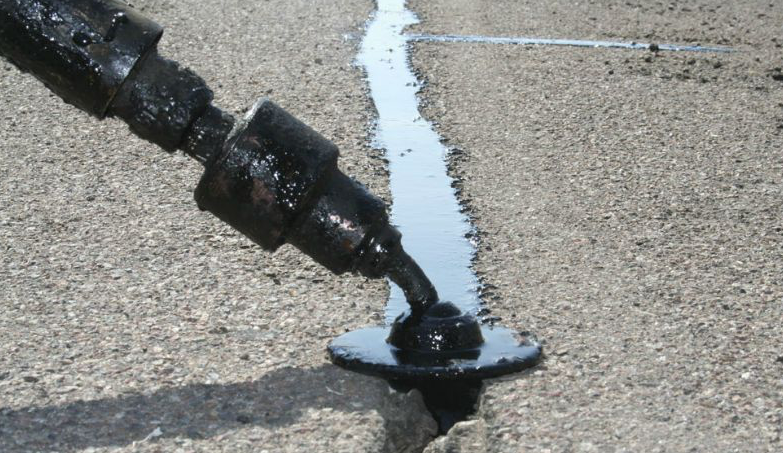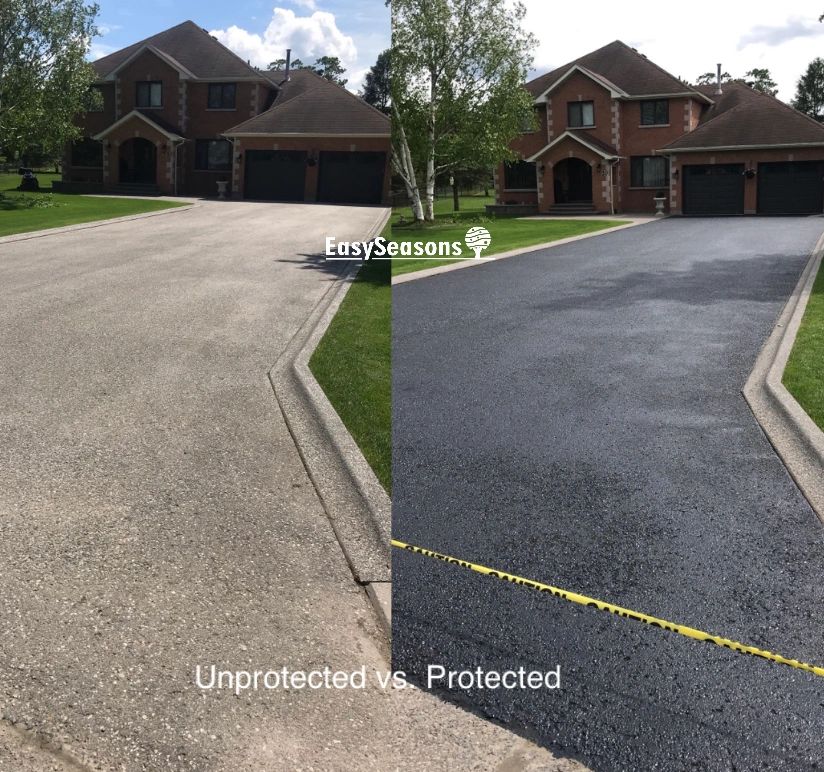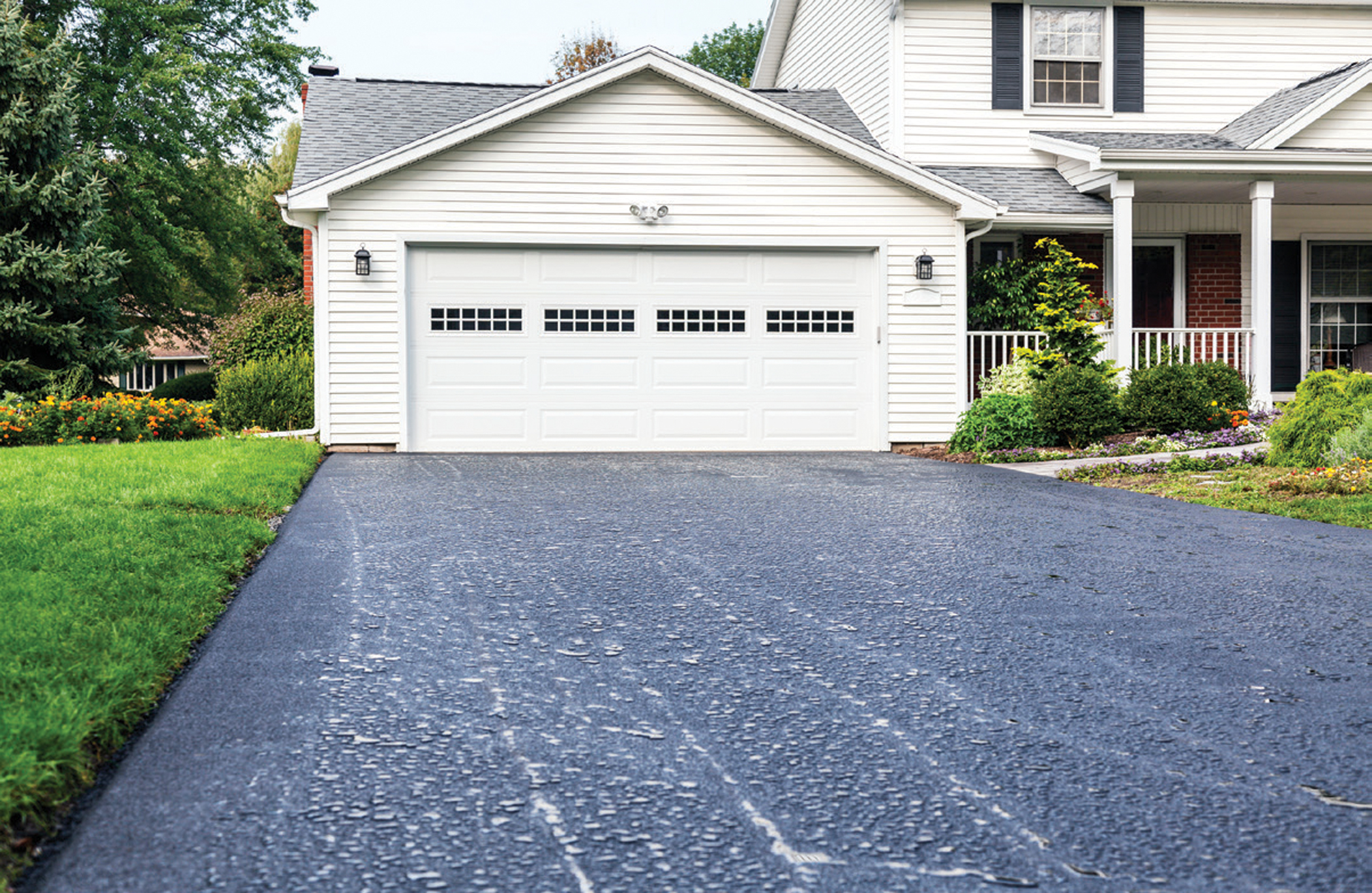Elevate Safety and Appeal: Angled Parking Lot Solutions with Asphalt Sealing
Wiki Article
Hot Mix Asphalt: A Lasting Solution for Sidewalk
Warm Mix Asphalt (HMA) has arised as a leading lasting option for sidewalk options, providing a myriad of cutting-edge modern technologies and ecological benefits. Its ability to lower and reuse materials energy intake presents a compelling situation for its adoption in road building jobs. The long-term efficiency and sturdiness of HMA make it a favored alternative for infrastructure growth. As the demand for environment-friendly building methods grows, checking out the nuances of HMA's sustainability can provide useful insights right into the future of pavement remedies.Ecological Benefits of Warm Mix Asphalt

Furthermore, Warm Mix Asphalt helps to alleviate urban heat island results. Its dark color absorbs sunshine, reducing the amount of heat mirrored back right into the atmosphere contrasted to lighter-colored pavements. This can decrease ambient temperature levels in urban locations, lowering the demand for a/c and inevitably minimizing energy usage.
In enhancement, Warm Mix Asphalt adds to boosted stormwater monitoring. Its permeable nature permits water to recharge and penetrate the sidewalk groundwater materials, reducing overflow and the risk of flooding. These ecological advantages make Warm Mix Asphalt a lasting option for leading freeways and roads.
Energy Performance in HMA Manufacturing
Is power performance a vital factor in the manufacturing of Hot Mix Asphalt (HMA)? Power plays a significant function in the production of HMA, affecting both expense and ecological sustainability. One crucial aspect of energy effectiveness in HMA production is the usage of cozy mix asphalt (WMA) modern technologies.In addition, advancements in plant modern technologies have led to more energy-efficient HMA production procedures. Modern plants are created with features like recycled asphalt pavement (RAP) processing capacities, efficient heater systems, and improved insulation, all adding to energy financial savings. By enhancing energy use in HMA manufacturing, the market can minimize its carbon footprint while preserving top quality pavement materials. Power effectiveness is, consequently, a crucial factor to consider in ensuring the sustainability of Warm Mix Asphalt manufacturing.
Recyclability of Hot Mix Asphalt
The recyclability of Hot Mix Asphalt (HMA) is an essential facet of its sustainability and lasting ecological effect. HMA is just one of one of the most recycled materials in the United States, with over 100 million loads of reclaimed asphalt sidewalk (RAP) being recycled annually in new pavement building and construction. Recycling HMA supplies numerous environmental benefits, such as reducing the need for virgin materials, lowering energy consumption throughout manufacturing, and lowering the amount of waste sent out to landfills.The process of reusing HMA includes grating the existing pavement, squashing it into smaller sized items, and mixing it with new aggregate and asphalt binder to create a recycled mix. Overall, the recyclability of HMA plays a considerable function in promoting sustainable methods within the pavement sector.

Long-Term Performance of HMA
Asphalt pavements show durability and resilience over a prolonged duration, showing the long-lasting performance of Hot Mix Asphalt (HMA) The longevity of HMA can be credited to its capacity to hold up against rush hour tons, harsh weather, and the results of aging. Research studies have actually revealed that well-designed and effectively built HMA sidewalks can last for 20 years or even more with normal upkeep. The trick to making the most of the long-lasting efficiency of HMA depends on using top notch products, adhering to finest techniques in construction, and carrying out reliable maintenance methods. Appropriate water drainage, routine assessments, and prompt repair services are important for preserving the architectural stability of HMA pavements over time. Furthermore, improvements in HMA modern technology, such as using polymer-modified binders and warm mix asphalt, have better improved the resilience and longevity of HMA sidewalks. By prioritizing high quality building and construction and maintenance techniques, HMA continues to verify itself as a cost-effective and sustainable option for resilient pavement facilities.
HMA: Toughness and Sustainability
Demonstrating both longevity and sustainability, Hot Mix Asphalt (HMA) has actually ended up being a foundation in the construction of resilient pavement infrastructures - angled parking. HMA's resilience originates from its ability to endure hefty loads, extreme weather, and high website traffic quantities, making it a trusted choice for roads, highways, and flight terminal runways. The make-up of HMA, which generally includes aggregates, binder, and filler, plays a crucial function in boosting its longevity and resistance to wear and tear
Furthermore, HMA's sustainability hinges on its recyclability and energy-efficient production procedure. The capacity to reuse redeemed asphalt pavement (RAP) in new HMA blends reduces the demand for virgin materials and lessens the environmental influence of sidewalk building and maintenance. In addition, the power performance of producing HMA depends on its lower mixing temperatures contrasted to various other sidewalk products, resulting in minimized energy intake and greenhouse gas exhausts.
Verdict
To conclude, hot mix asphalt (HMA) provides a lasting solution for sidewalk with its environmentally pleasant characteristics. HMA's recyclability, power hot mix asphalt efficiency in production, and lasting longevity make it an eco-friendly choice for roadway building and construction. By preserving natural deposits, reducing waste, and reducing greenhouse gas emissions, HMA plays a vital duty in promoting sustainability in framework development. Its ability to mitigate urban warmth island results better emphasizes its relevance in developing eco conscious and resilient pavement systems.
HMA is one of the most recycled materials in the United States, with over 100 million loads of redeemed asphalt pavement (RAP) being reused yearly in brand-new sidewalk construction.The procedure of reusing HMA includes milling the existing pavement, crushing it right into smaller sized pieces, and blending it with new accumulation and asphalt binder to create a recycled mix.Asphalt pavements demonstrate toughness and strength over a prolonged duration, reflecting the lasting performance of Warm Mix Asphalt (HMA) Furthermore, advancements in HMA modern technology, such as the usage of polymer-modified binders and warm mix asphalt, have actually even more enhanced the resilience and longevity of HMA sidewalks. The ability to reuse redeemed asphalt pavement (RAP) in new HMA combinations lowers the demand for virgin products and minimizes the ecological impact of pavement building and construction and maintenance.
Report this wiki page